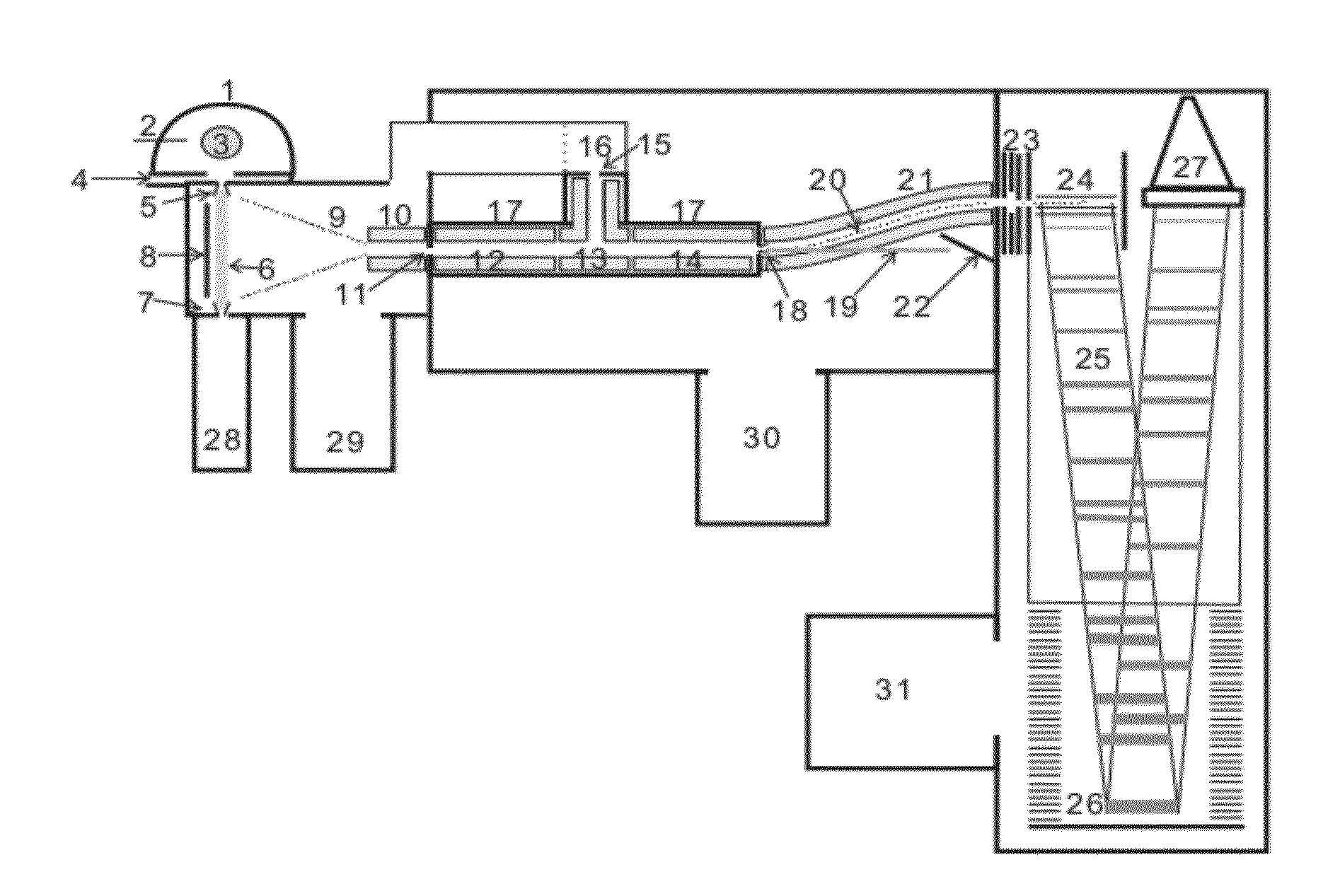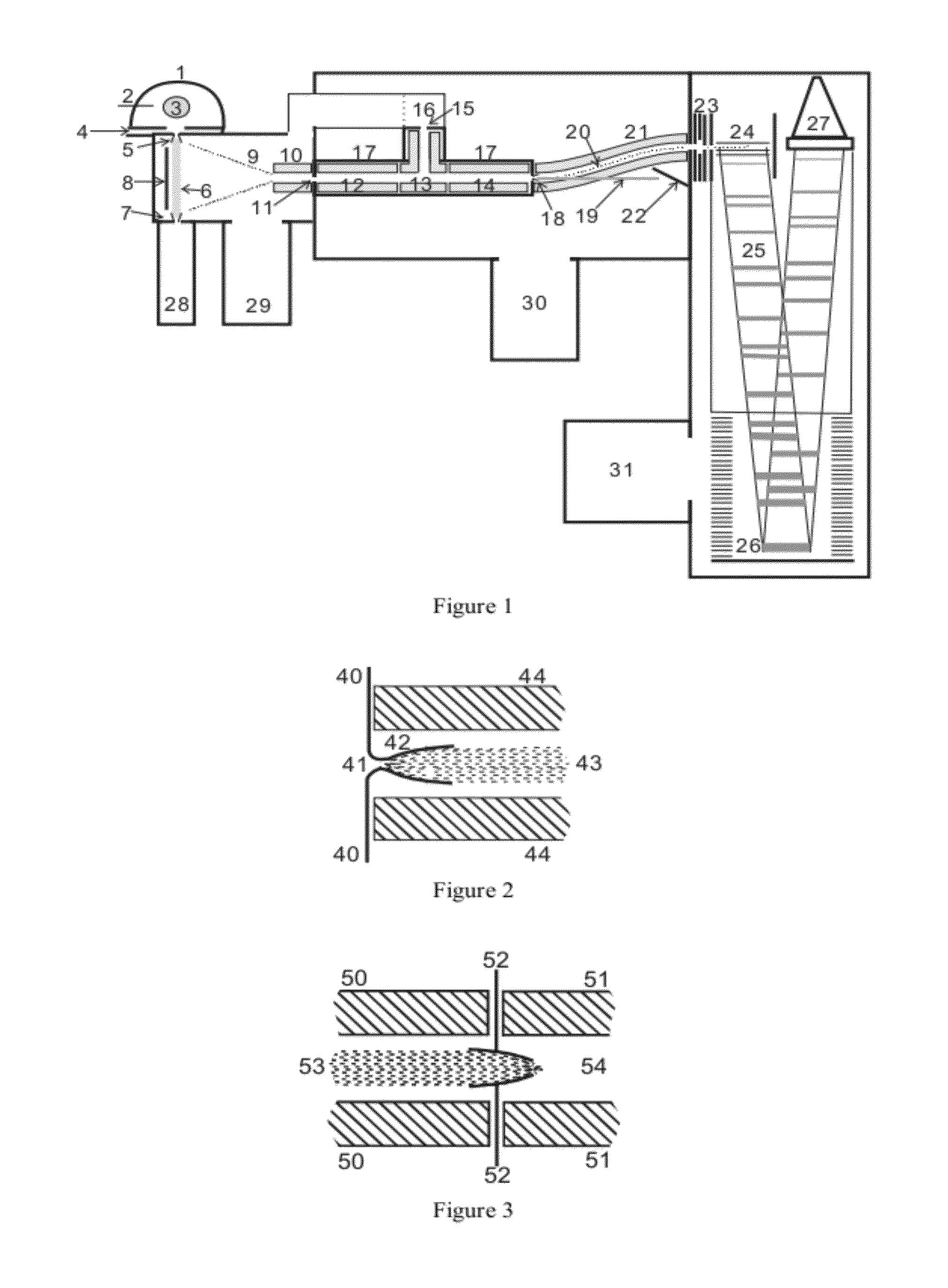Utilizing gas flows in mass spectrometers
a mass spectrometer and gas flow technology, applied in the direction of isotope separation, electric discharge tubes, particle separator tubes, etc., can solve the problems of difficult process and simplify the design and operation of mass spectrometers, and keep the gas flow free of losses, easy to generate effects
- Summary
- Abstract
- Description
- Claims
- Application Information
AI Technical Summary
Benefits of technology
Problems solved by technology
Method used
Image
Examples
Embodiment Construction
[0028]As pointed out above, the invention primarily provides a mass spectrometer with an RF quadrupole rod system, operated as mass filter or mass analyzer in the medium vacuum regime, utilizing a gas flow to drive the ions are through the analyzer. Furthermore, the invention provides a tandem mass spectrometer in which an RF quadrupole rod system is operated as a mass filter at vacuum pressures in the medium vacuum pressure regime, utilizing a gas flow of moderate speed to drive the ions through the mass filter, and in which an RF multipole rod system serves as fragmentation cell at the same pressure. The gas flow is generated by a nozzle in the wall between two vacuum stages of a differential pumping system. The ions enter the RF quadrupole mass analyzer or filter entrained by the gas beam generated by the pressure difference across the nozzle. To make the ions enter the nozzle, the ions may be collisionally focused by an RF multipole system located directly in front of the nozzle...
PUM
 Login to View More
Login to View More Abstract
Description
Claims
Application Information
 Login to View More
Login to View More - R&D
- Intellectual Property
- Life Sciences
- Materials
- Tech Scout
- Unparalleled Data Quality
- Higher Quality Content
- 60% Fewer Hallucinations
Browse by: Latest US Patents, China's latest patents, Technical Efficacy Thesaurus, Application Domain, Technology Topic, Popular Technical Reports.
© 2025 PatSnap. All rights reserved.Legal|Privacy policy|Modern Slavery Act Transparency Statement|Sitemap|About US| Contact US: help@patsnap.com



